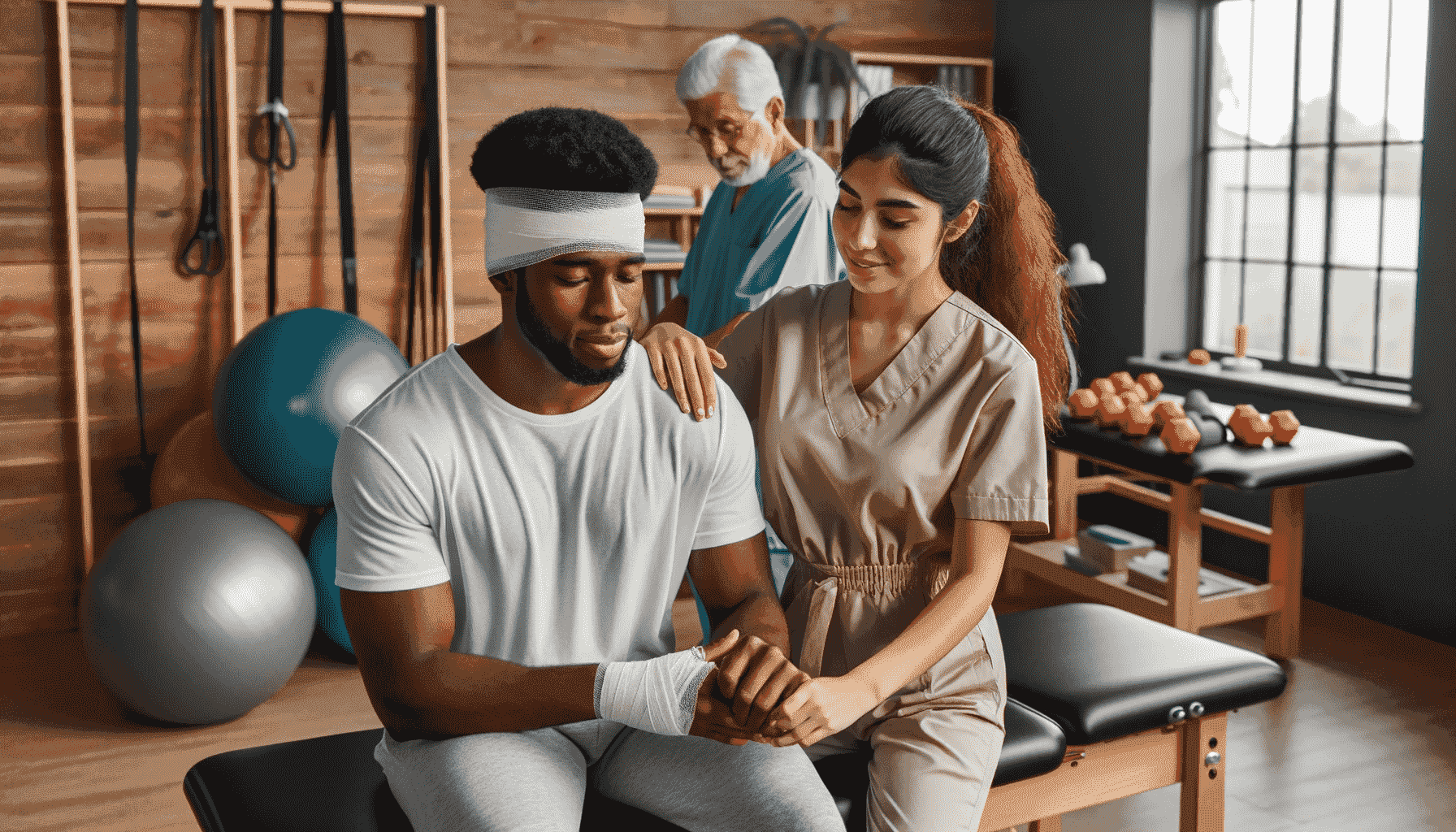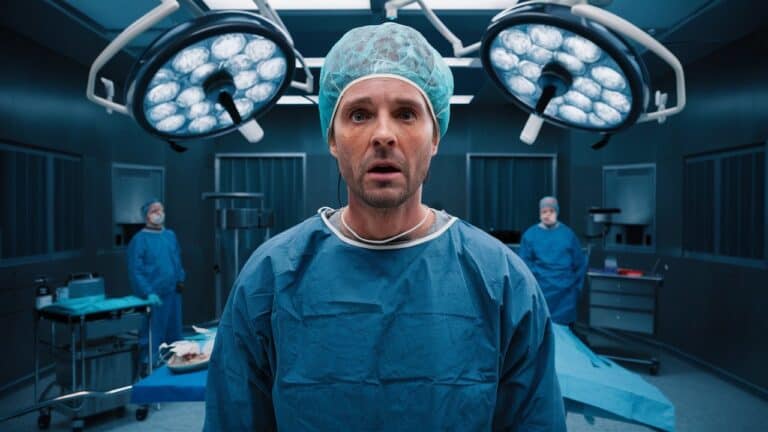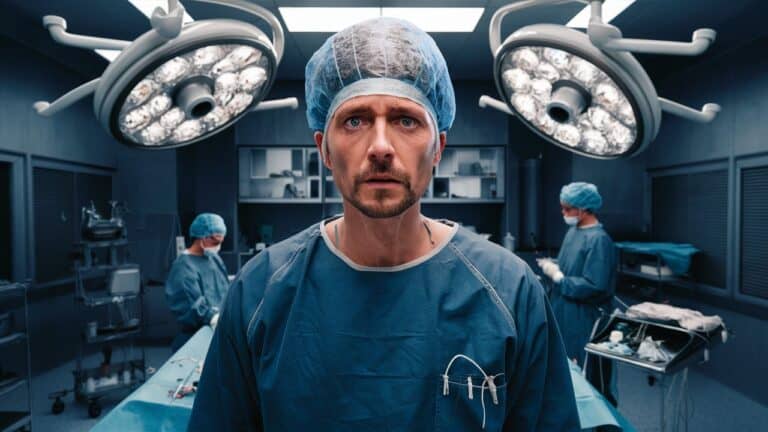Imagine this: a routine day takes an unexpected turn with the screech of tires and shattering glass. A car accident can happen to anyone, anytime—and it could leave more than just metal bent out of shape. When someone’s world goes spinning, not all wounds are visible; some hide beneath the surface, including the possibility of Traumatic Brain Injury After a Car Accident.
Traumatic Brain Injury after a car accident is one such invisible yet profound mark that often gets overlooked in the immediate chaos. It’s like an uninvited guest at life’s party—disrupting everything from memory to mood without warning.
This isn’t about statistics or medical jargon—it’s about real people dealing with unexpected detours on their life’s journey. Stick around because you’ll find keys to unlock understanding about TBIs—their causes, claims for compensation, and long-term effects—sprinkled with insights specific to Maryland roads.
The road ahead might seem daunting, but knowing what signs to look for and where help lies can steer recovery in the right direction. Let me guide you through this journey with clear steps and supportive advice that’ll make navigating your path a bit easier.
Table Of Contents:
- Understanding Traumatic Brain Injury after a Car Accident in Maryland
- Seeking Medical Treatment for Traumatic Brain Injury after a Car Accident
- Legal Considerations for Traumatic Brain Injury Cases in Maryland
- Rehabilitation Journey After Suffering a Traumatic Brain Injury from a Car Accident
- Preventative Measures Against Traumatic Brain Injury During Vehicle Collisions
- Coping with Long-Term Effects of Traumatic Brain Injury
- Success Stories: Inspiring Outcomes Following Traumatic Brain Injuries Due to Auto Accidents
- FAQs in Relation to Traumatic Brain Injury after a Car accident
- Conclusion
Understanding Traumatic Brain Injury after a Car Accident in Maryland
Imagine your brain is like the command center of a high-tech spaceship. Now, think about what happens when that ship hits an asteroid belt. That’s kind of what goes on inside your skull during a car accident—traumatic brain injury (TBI) can occur when your head suffers a sudden jolt or blow.
What is a TBI after a car accident?
Traumatic brain injuries are no laughing matter; they’re disruptions in normal brain function due to external forces. But not all TBIs are created equal—we’ve got mild traumatic brain injuries like concussions, which might just knock you out for some time, and then there are the severe cases where it could lead to long-term damage or even be life-threatening.
In motor vehicle crashes, whether you’re slamming into another car at an intersection or getting sideswiped by someone who didn’t see you coming—your noggin takes quite the hit. And if it’s forceful enough to bounce your delicate grey matter against the inner walls of your cranium? Hello TBI. It’s like dropping an egg—the shell might look fine from outside but scramble city on the inside.
The Leading Causes of TBIs in Maryland Car Accidents
Maryland roads aren’t just pathways—they’re potential stages for unwanted stunt shows featuring drivers and passengers as unwilling participants. When vehicles collide with each other—or worse yet, get intimate with stationary objects—it’s often heads that pay dearly.
We know this because stats tell us loud and clear: In our state alone, motor vehicle crashes top charts as one reason young folks end up hospitalized due to TBIs. And guess what age group finds themselves more frequently navigating these troubled waters? Adolescents and adults between 15-44 years old—that’s prime-time life adventure territory we’re talking about here.
You’d think steering wheels would play nice during accidents—but sometimes they don’t—and neither do airbags always cushion blows adequately. Even seat belts have their off days where instead of protecting people injured in vehicle collisions, they contribute by adding pressure around waists causing bodies to whip forward unpredictably upon impact resulting in closed-head traumas—a fancy term meaning ‘damage isn’t obvious’ but trust me; brains feel every bit.
If anyone needed proof that prevention beats cure any day – well let them chew on this tidbit: For certain age groups living right here under Old Line State skies – namely those aged 15 through 24 along with individuals ranging from
25 to 34 years old, there’s compelling evidence. This demographic is particularly vulnerable and stands much to gain from preventative measures. Taking proactive steps towards health can dramatically reduce the risk of chronic diseases later in life. So it makes sense to focus our efforts on promoting healthy lifestyles among these young adults now—it’s a smart investment for their future.
Think of your brain as the command center hit by an asteroid in a car crash. TBIs are serious business, from mild concussions to severe damage. In Maryland, young adults face high risks on the roads; prevention is key.
Seeking Medical Treatment for Traumatic Brain Injury after a Car Accident
After a car accident, it is important to be aware of any potential signs that may indicate the presence of a traumatic brain injury (TBI). It may not be as obvious as a bump or passing out, with signs like mumbled speech, hazy vision, and trouble focusing potentially appearing gradually. Sometimes signs like slurred speech, blurred sight, or difficulty focusing can emerge unexpectedly after an accident.
Immediate Actions Post-Accident to Protect Your Brain
The moments following an accident are pivotal; quick action is your best defense against lasting damage. First things first: check yourself and others for injuries. Even if you feel fine, TBIs can be sneaky – they’re known to play hide-and-seek with their symptoms. And remember, motor vehicle crashes don’t just dent cars; they’re notorious culprits behind TBI-related hospitalizations in Maryland’s younger crowd – those spirited souls between 15 and 44 years old.
Your next move? Hit up the emergency room like it’s Black Friday and medical care is on sale. The sooner you get there, the better chance doctors have at diagnosing potential issues early using diagnostic tests such as CT scans—your brain’s version of real estate photography.
Diagnostic Tools Used by Medical Professionals
Say hello to your new pals: computerized tomography (CT) scans and magnetic resonance imaging (MRI). These aren’t sci-fi gadgets but rather cutting-edge tools that let docs peek inside your noggin’. They’re particularly good at capturing images of blood vessels gone rogue or any internal rebellion post-accident.
In case anyone needs convincing about these high-tech marvels’ importance after an unfortunate rendezvous with another vehicle—or even just steering wheel—know this: direct blows leading to open head wounds may make TBI obvious signs hard to miss, but closed head traumas from sudden impacts lurk beneath surfaces deceivingly well-maintained by our skulls’ stealthy exteriors.
Get more facts from CDC here, because when it comes down brass tacks—or should we say steel helmets?—knowledge truly is power.
After a car crash, watch for sneaky TBI signs like blurred vision or trouble focusing. Quick action is key to prevent long-term harm.
Hospital stats show car crashes often cause TBIs in young Marylanders. Get to the ER fast; early scans can spot hidden issues.
CT and MRI scans are game-changers, revealing damage not visible from the outside. Remember, prevention is better than cure—always buckle up.
Legal Considerations for Traumatic Brain Injury Cases in Maryland
If you’ve been hit hard by a car accident and it’s left you or a loved one with a traumatic brain injury (TBI), knowing your legal rights is as crucial as immediate medical care. In the Old Line State, motor vehicle crashes lead to more dances with death among young adults and seniors than any other cause of TBIs. When life throws a curve, take out the writing materials – or your phone – and start jotting down everything. First off, grab that pen and paper—or smartphone—and start documenting everything.
Documenting Your Case Post-Trauma
From day one post-accident, keep records like they’re gold because in court, they just might be. Those notes on how the crash unfolded could prove another driver’s negligence faster than Sherlock solves mysteries. Keep tabs on every detail: from blurry visions after hitting your head to ringing ears that won’t quit.
Dizziness balance issues? Jot them down too; these are often telltale signs of mild TBI—sneaky culprits that slip past CT scans but wreak havoc nonetheless. When insurance companies play hardball, these details will help your injury lawyer pitch for compensation like an MLB star.
The road ahead can feel longer than the I-95 if severe TBI is involved—a journey fraught with emergency room dashes and mounting medical bills so high they give Everest competition. Remember those stats we mentioned earlier? They aren’t just numbers—they represent people injured whose lives have spun outwards like tires on ice.
This isn’t about chasing ambulances; it’s about getting justice served alongside your hospital tray. And hey. While you’re at it recovering from open head injuries or fighting off sleep pattern monsters—that person who didn’t stop at the red light should not get away scot-free.
Seeking legal assistance early makes sure no stone goes unturned—from steering wheel impacts causing closed head trauma to victims blindsided by sudden impacts during their daily commute.
Your case needs layers deeper than Baltimore’s Inner Harbor: think mild traumatic brain injury group therapy sessions, piles of medical records thicker than Maryland crab cakes—all wrapped up nicely for courtroom presentation by an ace accident attorney quicker at unraveling cases than kids opening presents on Christmas morning.
After a car crash in Maryland, jot down every detail for your TBI case; it’s as vital as medical care. Notes can prove negligence and win compensation battles. Get legal help fast to dig deep into your case like an Inner Harbor dive—because justice should ride shotgun on your road to recovery.
Rehabilitation Journey After Suffering a Traumatic Brain Injury from a Car Accident
The voyage to recuperation after enduring a traumatic brain injury (TBI) from an auto crash can be as remarkable as the people who take it. For those in Maryland, the process of rehabilitation is not simply about mending; it’s about recovering one’s life.
Strategies for Enhancing Cognitive Functioning after TBI
It’s no secret that TBIs can throw you for quite the loop. But with strategies focused on enhancing cognitive functioning, patients often find ways to navigate through the fog. Memory games aren’t just child’s play—they’re tools that help rebuild what was lost during those terrifying moments of impact. And let’s not forget therapy sessions where speaking and understanding come back into focus—because clear communication is like getting behind the wheel again: liberating.
With targeted exercises designed by specialists, every small victory contributes to regaining control over one’s thoughts and actions.
Promoting Recovery and Improving Quality of Life after TBI
If you think your steering wheel had an airbag, wait until you see what medical professionals have up their sleeves. They’re equipped with an arsenal of therapy options tailored specifically for those recovering from TBIs due to vehicle crashes—a safety net made stronger through support systems both professional and personal.
Lifestyle adjustments also play hero roles here because sometimes saving the day means altering sleep patterns or finding new hobbies that fit within new realities. So yes, while dealing with slurred speech or blurred vision might seem daunting at first glance, taking charge leads toward improvement—and isn’t progress what being human is all about?
CDC statistics show motor vehicle crashes are among leading causes of TBI-related hospitalizations in Marylanders aged 15-44 years old. which underscores why these therapeutic paths are critical stepping stones towards full-fledged independence.
Maryland offers comprehensive rehab services so people injured don’t just survive; they thrive post-trauma—with every step forward celebrated louder than ringing ears could ever drown out.
Rehab after a TBI is about more than healing; it’s reclaiming life. With cognitive strategies and therapy, patients find ways to navigate the fog and regain control. Support systems and lifestyle changes are crucial—Maryland ensures survivors don’t just get by, they thrive.
Preventative Measures Against Traumatic Brain Injury During Vehicle Collisions
Every time you buckle up in Maryland, think of it as your personal shield against traumatic brain injury (TBI). The simple click of a seat belt could be the barrier that saves you from becoming part of a stark statistic—motor vehicle crashes are alarmingly the leading cause of TBI-related hospitalizations for folks aged 15 to 44.
The Importance of Seat Belts and Proper Restraint Systems
Maryland roads whisper tales of safety and woe. They’ll tell you that strapping in with proper restraint systems isn’t just law; it’s lifesaving lore. In an instant, where metal clashes and glass shatters, these restraints can prevent your body from taking flight like a misguided missile seeking its next target—the unforgiving interior surfaces or worse yet, ejection through windows into unknown fates.
Safe Driving Practices to Minimize Risk of TBI
Cruise down Maryland streets with eyes wide open—not just for scenery but for survival too. Defensive driving is more than skill—it’s artistry on asphalt canvases where anticipation paints safer stories. Adhere strictly to speed limits because they aren’t suggestions—they’re protective spells cast over highways guiding travelers safely home.
To reduce risk even further:
- Ditch distractions like phones that beg attention away from paths ahead;
- Navigate night-time nooks cautiously since darkness drapes dangers unseen during daylight drives;
- Harness weather wisdom—rain slicks create slippery slopes best approached with caution.
Maryland-Specific Laws Initiatives Road Safety
If ever there was a chorus line sung by laws and initiatives around here—it’d be “Safety First.” You’ll find yourself under watchful guardrails erected by legislation specifically crafted keeping our state drivers’ well-being at heart.
From stringent DUI regulations snatching keys away before blurry lines blur judgment calls—to mandates insisting younger passengers live out childhood buckled snugly behind scenes until size deems them ready front-stage center—we’ve got rules rigged robust enough ensuring all aboard ride soundly.
Safety advocates agree: Following these golden guidelines might just tip odds favorably preventing TBIs worthy only nightmares..
For more information, feel free to reach out. We’re offering the aid you require.
Buckle up and drive defensively in Maryland to shield yourself from traumatic brain injuries. Embrace seat belts, obey speed limits, ditch distractions, and follow safety laws—it could save your life.
Coping with Long-Term Effects of Traumatic Brain Injury
Journeying through post-TBI life from a vehicular accident is like taking a voyage into the unfamiliar. Every day brings new challenges, whether it’s dealing with emotional and psychological effects or adapting to altered sleep patterns. Maryland residents know all too well the long road of managing symptoms that disrupt daily life.
Managing Symptoms and Challenges in Daily Life Support Systems
The aftermath of TBI often includes adjusting your routine to accommodate changes in how you think, feel, and act. Emotional outbursts may become part of your new normal or remembering simple tasks could suddenly seem monumental. But there’s hope; creating robust support systems becomes key to regaining control over life’s steering wheel post-accident.
Finding the right mix of therapy options can transform this journey—connecting with groups who understand what living with a brain injury group entails offers comfort when days get tough. And let’s be honest: some days will be tougher than others. Reaching out for help isn’t just wise; it shows strength beyond measure.
Emotional and Psychological Effects, Addressing Communication, Sleep Disturbances, Altered Patterns
Battling mood swings? Feeling isolated because words just won’t come out right anymore? You’re not alone on this bumpy ride down recovery lane—a surprising number of people injured in car accidents face these hurdles every single day.
Tackling communication barriers starts by embracing patience both with yourself and those around you while working closely with speech therapists if slurred speech or difficulty concentrating creeps into conversations. Now let’s talk shut-eye—or lack thereof—the frustration from staring at the ceiling night after night is real when TBI messes up your sleep schedule.
To combat those restless nights, establishing consistent bedtime rituals helps signal your body that it’s time to wind down despite dizziness balance issues that might keep you tossing and turning more than before the accident occurred.
Given the prevalence of TBIs resulting from car accidents, it is essential to address this issue by advocating for better safety protocols and providing support for those already affected. We need to tackle this head-on by promoting better safety measures and providing support for those already affected. And while we’re at it, let’s spread the word about prevention—it could save lives.
Life after a TBI is tough, but creating strong support systems and finding the right therapies can steer your recovery in the right direction. Don’t shy away from reaching out; it’s a sign of strength. Face communication hurdles with patience and tackle sleep issues with consistent bedtime rituals.
Success Stories: Inspiring Outcomes Following Traumatic Brain Injuries Due to Auto Accidents
Though TBIs may seem insurmountable, they don’t have to be the end of a person’s story. Meet individuals who turned their challenging recovery journeys into milestones of hope and resilience.
Overcoming Challenges with Support Systems in Place
Rebounding from a TBI is frequently an extensive, ongoing process. With support systems like dedicated medical professionals and loving families, survivors have made remarkable progress. One young man’s journey began with slurred speech and blurred vision after his car collided with an oncoming vehicle—a direct blow to his head that left him fighting for normalcy.
The road was tough; cognitive therapy sessions were filled with frustration as he relearned basic skills we take for granted—like concentrating long enough to read this sentence or maintaining balance while standing up straight. Yet through determination and expert care at Maryland healthcare facilities specializing in TBI rehabilitation, he now celebrates significant victories over what seemed insurmountable obstacles once upon a time.
Achieving Milestones Through Early Intervention & Medical Treatment
In another instance, early medical treatment became the cornerstone of recovery for a mother injured when her SUV rolled over after being side-swiped by a truck. Emergency room doctors used CT scans to assess her condition promptly—an open head wound complicated by potential blood vessel damage within her brain tissue.
Thankfully due to quick actions by first responders and immediate intervention by skilled medical examiners back at the hospital using advanced diagnostic tests, she avoided severe complications like traumatic brain hemorrhage which could’ve led to even more serious outcomes such as death or permanent disability—the leading cause according to many statistics related directly towards motor vehicle crashes causing TBIs especially amongst certain age groups including adolescents all the way up till adults aged 44 years old right here in our own state of Maryland.
Inspiring Recovery Stories Fueled By Encouraging Hope & Resilience
Sometimes it’s about looking beyond just physical healing—it’s also nurturing mental strength during those times when you feel most vulnerable post-accident; because emotional scars might linger longer than any visible mark ever will on your body itself following something so unexpectedly catastrophic happening out of nowhere while simply driving down the road one day…
This narrative rings true for another survivor whose memory lapses posed daily challenges yet did not diminish his spirit nor prevent him from setting new goals every single day moving forward stronger than before. His inspiring story echoes among many others shared online where real-life accounts give encouragement, offering practical lessons learned and genuine insights. These stories demonstrate unequivocally the power of human perseverance in overcoming adversity.
Recovery from a traumatic brain injury is tough but possible with grit and the right care. Real-life stories show us that early medical action and strong support can lead to remarkable comebacks, even when odds are stacked against you.
FAQs in Relation to Traumatic Brain Injury after a Car accident
What is the life expectancy of someone with TBI?
TBI can reduce lifespan, but factors like severity and timely treatment heavily influence outcomes.
What is life like for a person with a traumatic brain injury?
Lives change post-TBI: daily tasks may get harder, requiring new coping strategies and support systems.
Can the brain heal from traumatic brain injury?
The brain has some healing capabilities; recovery varies widely among individuals with TBI.
Will you ever be the same after a brain injury?
A full return to pre-injury condition isn’t guaranteed; many face lasting changes or adaptations.
Conclusion
Wrapping it up, Traumatic Brain Injury after a car accident is no small hurdle. It’s a complex challenge that can shake the foundations of your everyday life. From understanding what TBI really means to knowing your legal rights in Maryland, this journey requires attention and care.
Remember the urgency of medical treatment post-accident; it could be lifesaving. Keep those CT scans and medical records close—they’re vital for both recovery and any legal action.
Navigate wisely through Maryland’s laws on compensation claims—getting rightful help matters just as much as getting healthy does.
Embrace rehabilitation with open arms; it’s not just about healing, but rebuilding stronger than before. And always buckle up—it’s a simple act that stands between you and potential disaster.
Your road to recovery may be long or winding, but stay hopeful. Each step forward is progress made against odds stacked high by unexpected events on Maryland roads.





